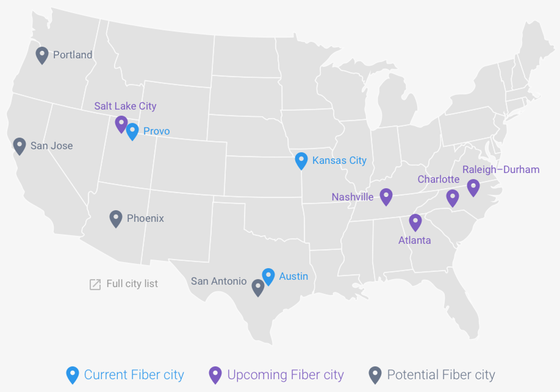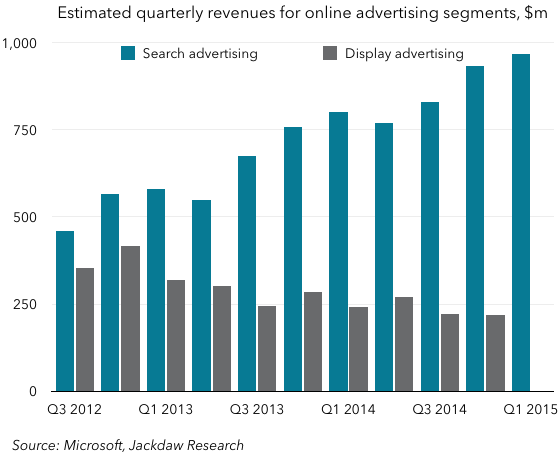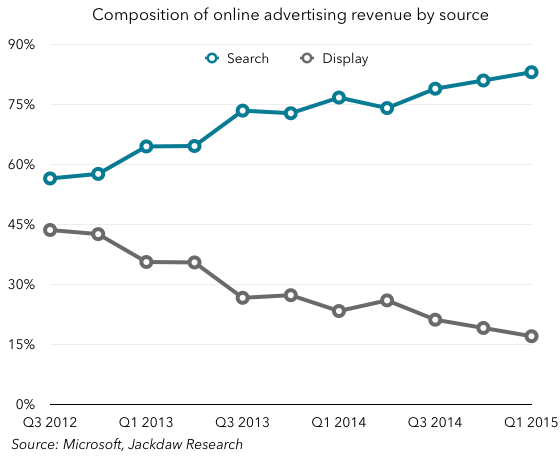So, after yesterday’s preview post on Apple Watch sales, I thought I’d have a stab at interpreting today’s earnings report and call on this specific point. Yesterday’s post highlighted the challenges and pitfalls inherent in such an exercise, so I’ll walk you through all my assumptions so you can follow along and decide whether or not you agree on the way.
Other Products revenue
As I said yesterday, the starting point for this analysis is revenue from “Other Products”, the Apple segment which includes all hardware products but the big three, along with both Apple’s own and third party accessories. That category has been in decline, but not a very consistent rate of decline. Revenues this quarter were $2.641 billion in this segment, compared to $1.767 billion a year ago (on the restated basis Apple provided in January, which includes Beats headphones). That means growth of $874 year on year, and $952 sequentially. I always find annual growth a more useful measure, so we’ll focus on that. I’m going to assume that Other Products revenue excluding Apple Watch declined by 10%, to around $1.6 billion.
This is based on the recent rate of decline, and you could argue that we might put this number as low as $1.4 billion, but I’m not necessarily ready to go quite that low. Cook confirmed on the earnings call that both iPod and accessories shrank year on year, but didn’t say how much. If we take $1.6 billion as our number, that gives us just over $1 billion in revenue for Apple Watch, which is obviously a lot lower than I talked about yesterday.
Average selling prices and unit sales
The next challenge is to set an average selling price (ASP) to divide this revenue figure by to get a unit shipment number. My assumption for average selling price had been that it was likely somewhere around $500, which is a nice sort of midpoint between the lowest and highest prices for the two mainstream models, the Watch Sport and Watch, implying that the two had sold in roughly equal proportions, and/or that Edition sales helped push ASP up a little if Sport sales outweighed Watch sales.
However, there are a couple of things that suggest we should moderate this: one is some survey data that suggests a heavy skew towards Watch Sport sales, and therefore a lower ASP. But the stronger signal came today from Apple itself. On the earnings call and in conversations with various reporters, Apple’s executives have suggested that sell-through for the first nine weeks for Apple Watch were ahead of the same period for the iPad. That’s a very specific thing to say, and deliberately doesn’t give us a specific number to work with either, since the iPad was on sale for 12 weeks when its first quarter of sales was reported. So we don’t have a 9-week number for iPads. The first reported quarter number was 3.27m iPads shipped (not necessarily sold through), so perhaps we apply a 75% figure to that, which assumes a somewhat straight-line trajectory, which may or may not be realistic. 75% of 3.27m is 2.45m. If we want, we can also make an adjustment for the fact that this is shipments, not sell-through, and perhaps reduce it a tad more. But on this basis Apple might have sold 2.5 million Apple Watches by the end of the quarter.
So let’s take that number and figure out what it implies about average selling prices. $1 billion in revenue divided by 2.5m shipments suggests an ASP of exactly $400, which is quite a bit lower than my original $500 figure. But if sales did indeed skew heavily towards the Watch Sport, and if most buyers didn’t buy extra straps and so on, it’s just about realistic.
Moving to a range
That gives us a very specific set of numbers:
- $1 billion in revenue
- 2.5 million shipments
- $400 ASP.
But that’s a lot of false precision, because it’s based on all kinds of assumptions. The revenue might have been as high as $1.2 billion, for example. ASPs might have been higher – perhaps as much as $450. Applying these numbers gives us more of a range:
- $1-1.2 billion in revenue
- 2-3 million shipments
- $400-450 ASP.
That seems like a reasonable set of numbers to me, and I’m pretty happy with those. I’m curious to see what numbers others come up with.
Looking forward
I ended yesterday’s piece with a bit on looking forward, and I feel really comfortable with the qualitative side of that, even if less comfortable with the quantitative side. Apple execs on the call today certainly hit many of the points I mentioned in that section. But one thing that I found interesting on today’s call was that sales are still ramping at this point, from April to May to June, contrary to my assumption that things might slow down a little in Q3 and then pick up again in Q4. I’m very curious to see how this actually plays out now that the Apple Watch is on sale in all but one of the countries where Apple has stores, and certainly all of its major markets.





